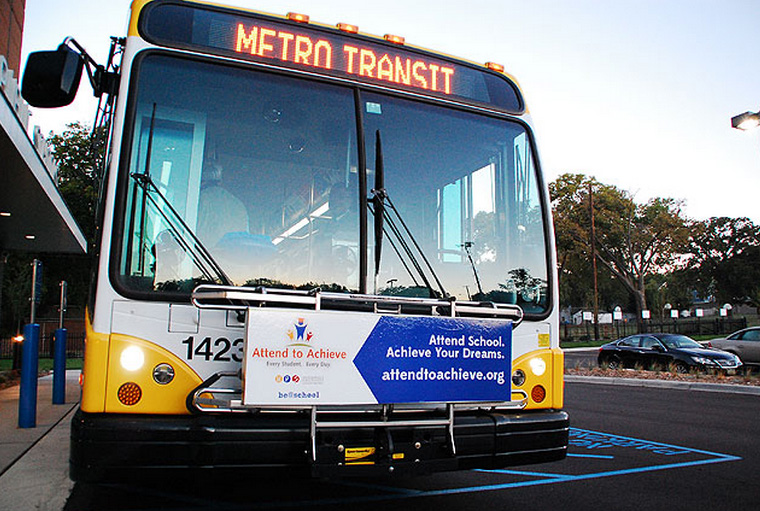
In the wake of our discussion downstream about Gov. Mark Dayton’s plan for tax and fee increases to solve Minnesota’s transportation ills, CityLab has a well-timed article today: Why can’t public transit be free?
Getting caught riding Metro Transit’s new Green Line without paying can be pricey, but often transit cops just kick the riders off the train. See a transit cop get on a train at a station, and you’ll see a higher-than-usual number of riders get off at that station.
Transit is already heavily subsidized and fairly affordable, writer Joe Pinsker notes — so why not just go all the way and make it free?
It’s a good question with a surprising answer. It brings more kids and crime, he says.
A 2002 report released by the National Center for Transportation Research indicated that the lack of fares attracted hordes of young people, who brought with them a culture of vandalism, graffiti, and bad behavior—which all necessitated costly maintenance. The lure of “free,” the report implied, attracted the “wrong” crowd—the “right” crowd, of course, being wealthier people with cars, who aren’t very sensitive to price changes. The NCTR report concluded that eliminating fares “might be successful for small transit systems in fairly homogeneous communities, it is nearly certain that fare-free implementation would not be appropriate for larger transit systems.”
Another report followed up 10 years later, revisiting the idea of a fare-free world. The report reviewed the roughly 40 American cities and towns with free transit systems. Most of the three dozen communities had been greatly successful in increasing ridership—the number of riders shot up 20 to 60 percent “in a matter of months.” But these successes were only to be found in communities with transit needs different from those of the biggest cities; almost all of the areas studied were either small cities with few riders, resort communities with populations that “swell inordinately during tourist seasons,” and college towns. In other words, slashing fares to zero is something that likely wouldn’t work in big cities.
A better idea, he theorizes, is making public transit free during certain hours — off-peak, for example.
Related: Transit ridership up 3.5 percent in 2014 (Southwest Journal).
